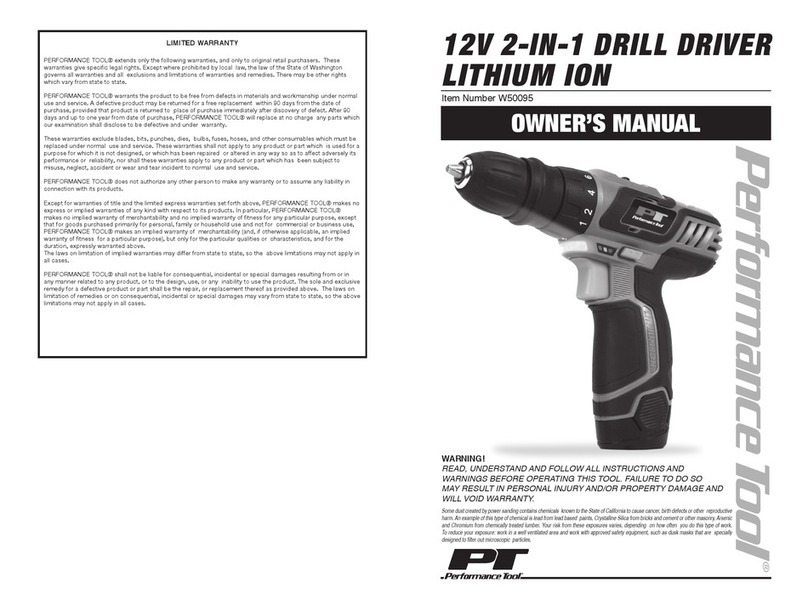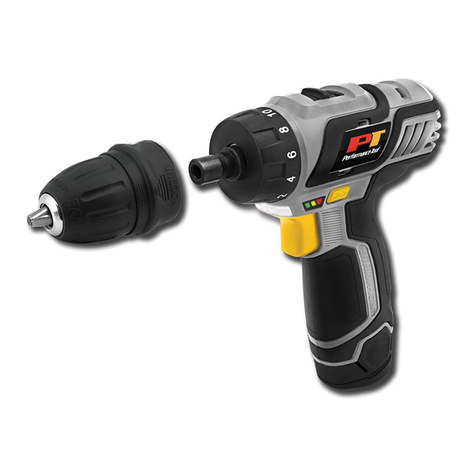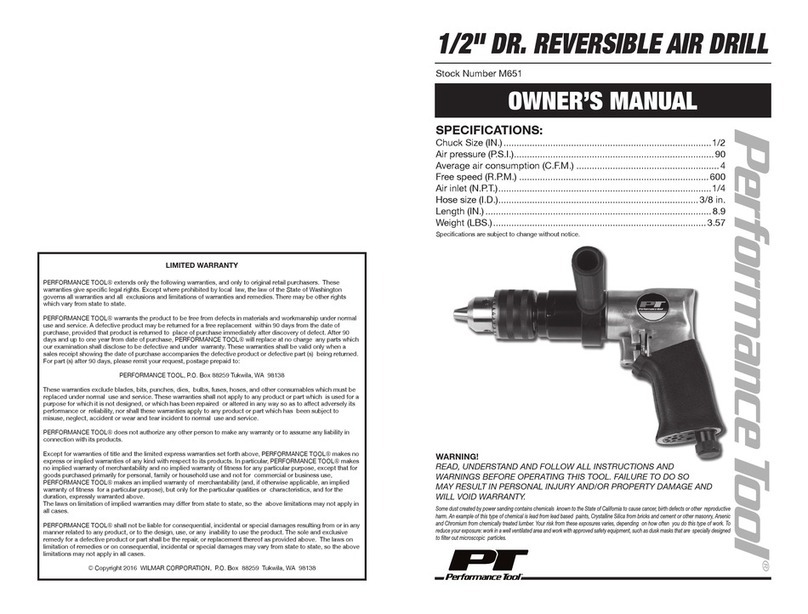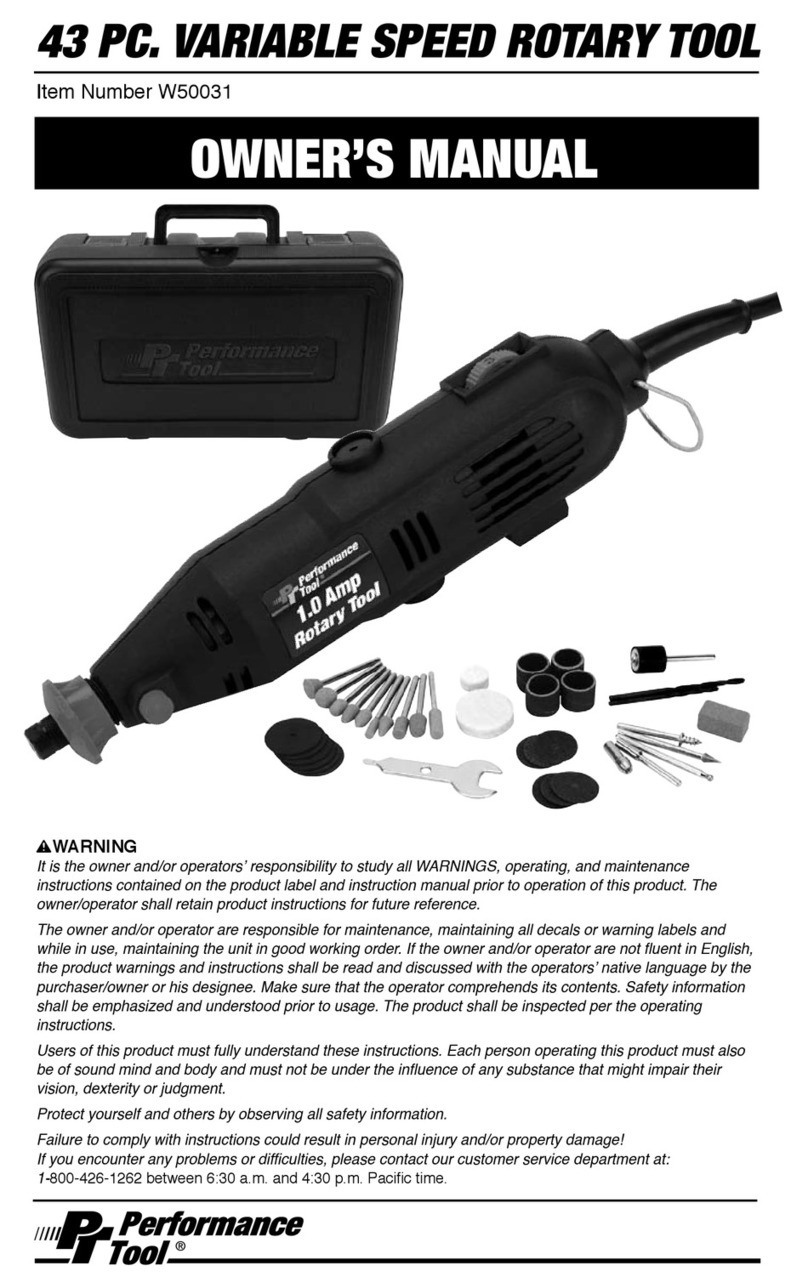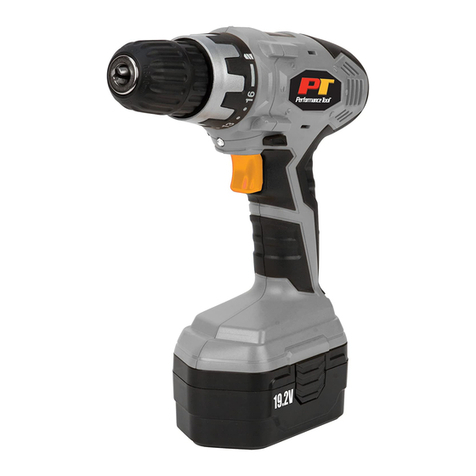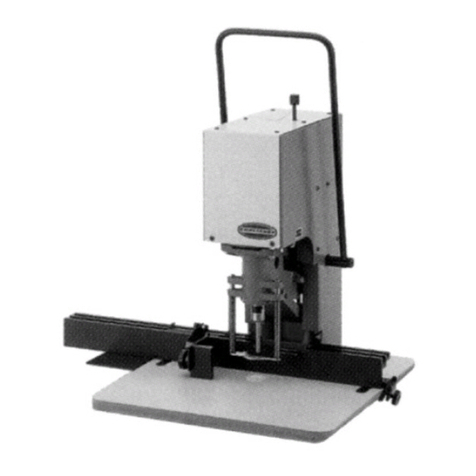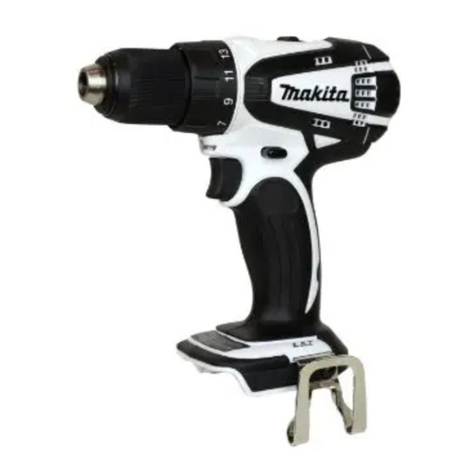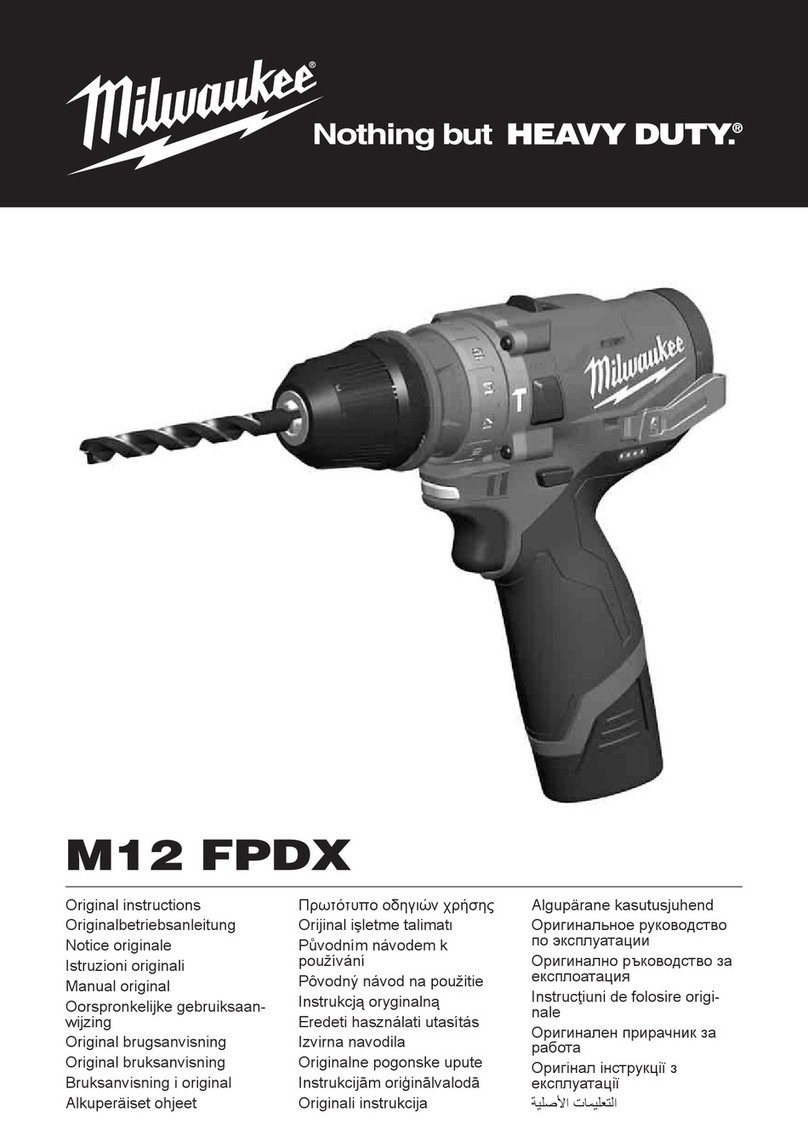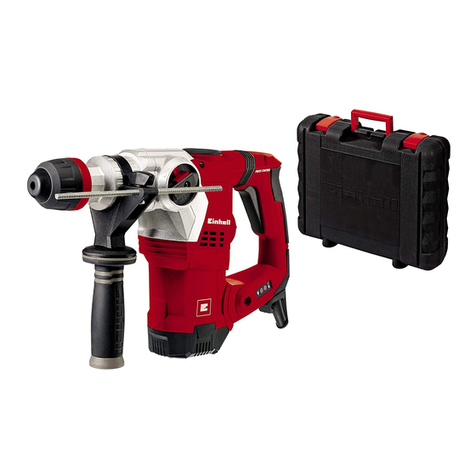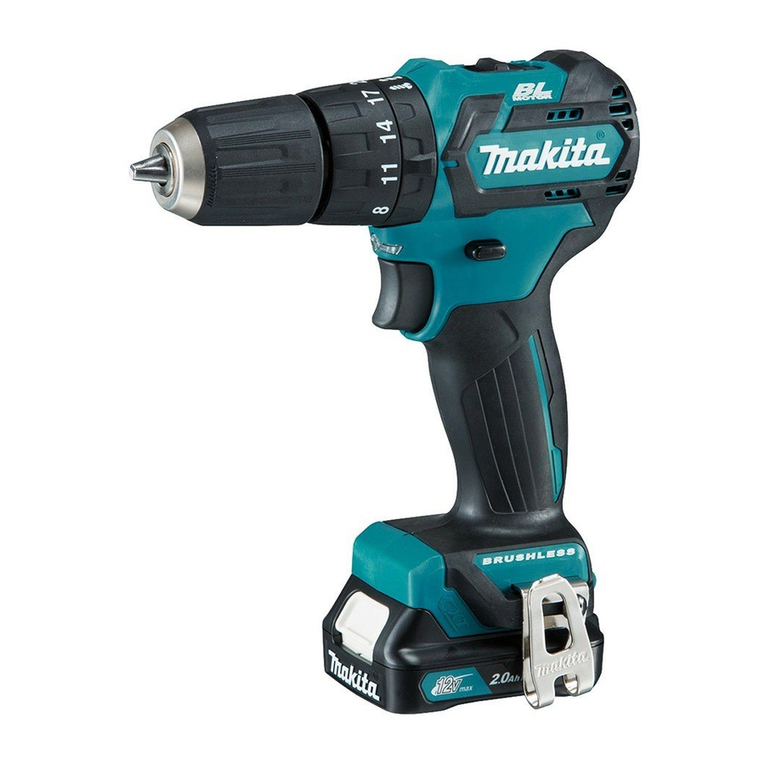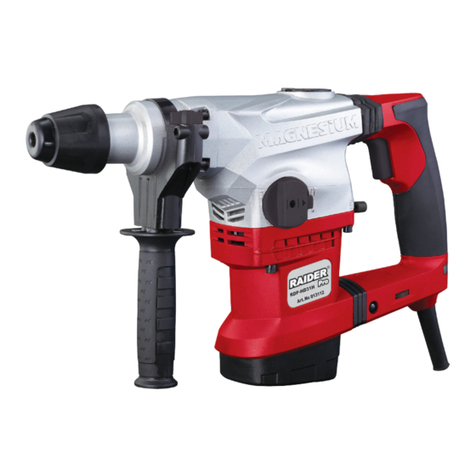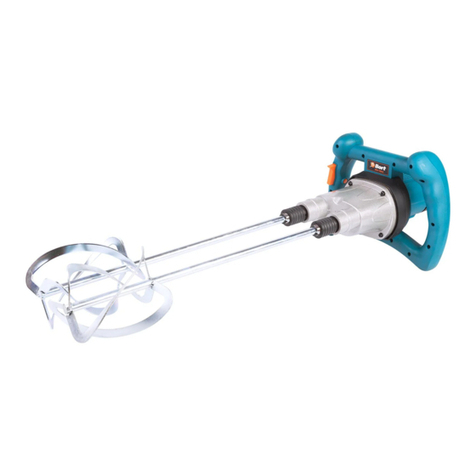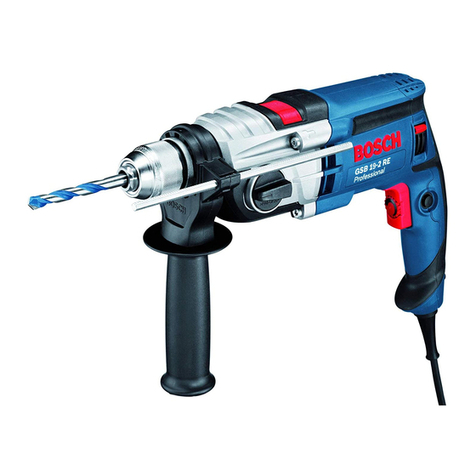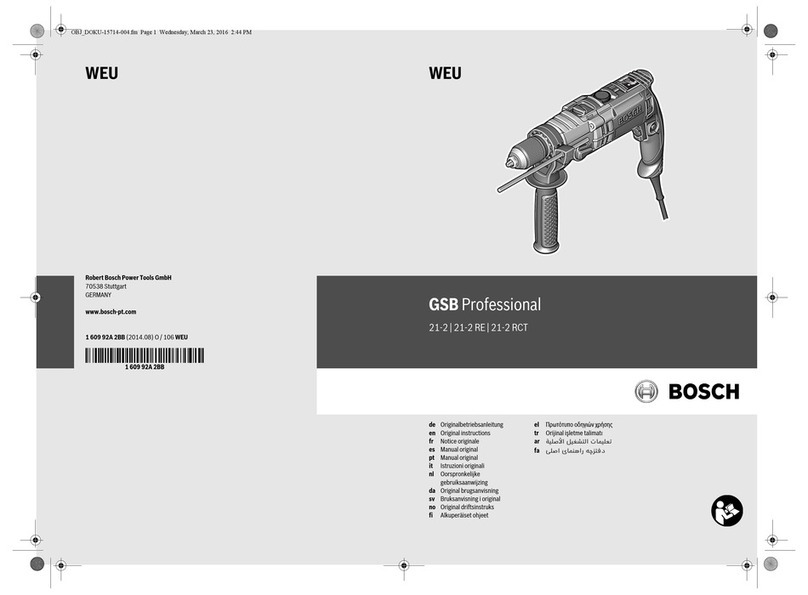
3
IMPORTANT SAFETY INFORMATION
the inuence of drugs, alcohol, or medication.
A moment of inattention while operating this
product may result in serious personal injury.
Keep proper footing and balance at all times.
Do not reach over or across running machines,
hoses, cords, etc.
6.Dress properly. Do not wear loose clothing or
jewelry. Keep your hair, clothing, and gloves
away from moving parts. Loose clothes, jew-
elry or long hair can be caught in moving parts.
7.Work Safe. Operate tool a safe distance from
yourself and others in the work area. Keep
proper footing and balance at all times. Do not
overreach, especially on ladders. Be certain
ladders being used are sturdy, stable, on a rm
surface and erected as safe working angles.
Do not reach over or across running machines,
hoses, cords, etc.
8.Inspect before every use; do not use if parts
are loose or damaged.
9.Do not alter this product in any way.
10. Use the right tool for the job. Do not attempt
to force a small tool or attachment to do the
work of a larger industrial tool. Don’t use a
tool whose performance is not adequate for
your work. Do not modify this tool and do not
use this tool for a purpose for which it was
not intended.
11. Power tool plugs must match the outlet.
Never modify the plug in any way. Do not use
any adapter plugs with earthed (grounded)
power tools. Unmodied plugs and matching
outlets will reduce risk of electric shock.
12. People with pacemakers should consult their
physician(s) before use. Electromagnetic
elds in close proximity to heart pacemaker
could cause pacemaker interference or
pacemaker failure. In addition, people with
pacemakers should:
• Avoid operating alone.
• Do not use with power switch locked on.
• Properly maintain and inspect to avoid
electrical shock.
• Any power cord must be properly
grounded. Ground Fault Circuit Interrupter
(GFCI) should also be implemented – it
prevents sustained electrical shock.
13.
Avoid body contact with earthed or grounded
surfaces such as pipes, radiators, ranges and
refrigerators. There is an increased risk of elec-
tric shock if your body is earthed or grounded.
14. Do not expose power tools to rain or wet
conditions. Water entering a power tool will
increase the risk of electric shock.
15.
Do not abuse the cord. Never use the cord for
carrying, pulling or unplugging the power tool.
Keep cord away from heat, oil, sharp edges
or moving parts. Damaged or entangled
cords increase the risk of electric shock.
16. When operating a power tool outdoors,
use an extension cord suitable for outdoor
use. Use of a cord suitable for outdoor use
reduces the risk of electric shock.
17. If operating a power tool in a damp location
is unavoidable, use a ground fault circuit
interrupter (GFCI) protected supply. Use of a
GFCI reduces the risk of electric shock.
Use power tool ONLY on adequately
rated circuits to avoid overheating of
electrical systems.
18.
Prevent accidental starting. Ensure switch is in
the “OFF” position before connecting to power
source and/or battery pack, picking up or car-
rying the tool. Carrying power tools with your
nger on the switch or energizing power tools
that have the switch “ON” invites accidents.
19. Do not use the power tool if the switch
does not turn it on and off.Any power tool
that cannot be controlled with the switch is
dangerous and must be repaired.
20. Have your power tool serviced by a qualied
repair person using only identical replace-
ment parts. This will ensure that the safety
of the power tool is maintained. Follow
instructions in the Maintenance section of
this manual. Use of unauthorized parts or
failure to follow Maintenance Instructions
may create a risk of shock or injury.
21. Disconnect the plug from the power source
and/or the battery pack from the power tool
before making any adjustments or changing
accessories. Such preventive safety mea-
sures reduce the risk of starting the power
tool accidentally.
22. Maintain power tools. Check for misalign-
ment or binding of moving parts, breakage of
parts and any other condition that may affect
the power tool’s operation. If damaged, have
the power tool repaired before use. Many
accidents are caused by poorly maintained
power tools.
23.
Keep cutting tools sharp and clean. Properly
maintained cutting tools with sharp cutting edges
are less likely to bind and are easier to control.
24. Use the power tool, accessories and tool bits
etc. in accordance with these instructions,
taking into account the working conditions
and the work to be performed. Use of the
power tool for operations different from
